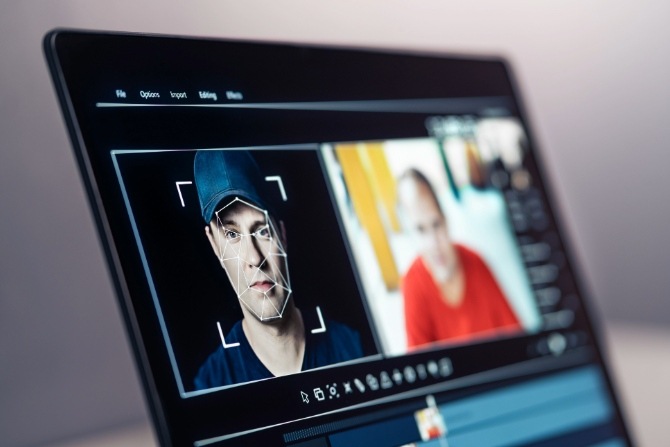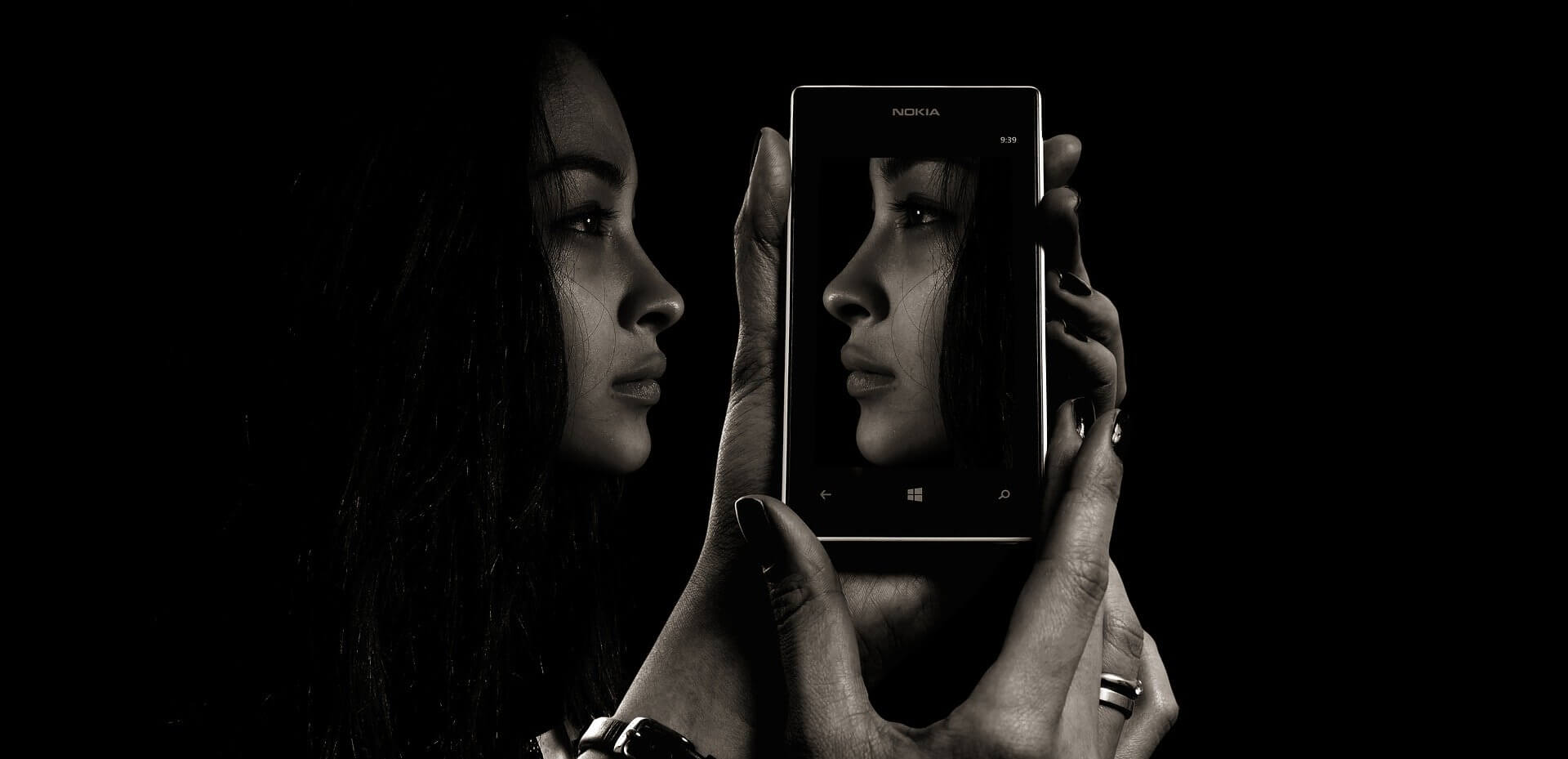
To learn how to protect yourself from falling victim to false information, you need to first understand what deepfakes are. Deepfakes are images or videos, generated by AI to produce highly realistic content.
How are deepfakes made?
Deep learning is an advanced Artificial Intelligence (AI) method, which uses multiple layers of machine learning algorithms to extract progressively higher-level features from raw input. It's capable of learning from unstructured data, such as the human face, movement and voice.
That data is processed to create a Deepfake video through a GAN (Generative Adversarial Network) - a specialized machine learning system. Two neural networks compete with each other in learning the characteristics of a training set, such as photographs, and then generating new data with the same characteristics.
As the network tests the created images against the training set, the fake images, videos, and audio become more convincing. This makes Deepfake an ever more potent threat, as they can utilize synthesizing techniques to replicate voices.
Another method for creating deepfakes is by using autoencoder architecture. An autoencoder neural network is designed to encode data (such as an image) into a lower dimensional latent representation (i.e. into mathematical vectors instead of pixels), compress the data, and then reconstruct the same data at the other end of the pipeline. Autoencoders are used for many purposes in computer vision, such as handwriting analysis and facial recognition.
Since autoencoders seek ‘essential’ data from an image (such as a face image), they are very good at eliminating visual noise. In the case of deepfake software, this means that an autoencoder architecture can learn fundamental features and traits from a face image whilst largely ignoring extraneous factors such as grain, shadows, and other ‘non-face’ elements that may be present in the image, resulting in versatile and well-generalized models (i.e. models that can perform useful transformations on data that’s different to their original training data).
How are deepfakes used
While the concept of deepfakes is also used to create visual effects in movies, online deepfakes have many intentions:
Disinformation campaigns, especially during elections, to sway people’s opinions.
Blackmail is where someone creates a deepfake video or image of you and threatens to release it if you don’t give in to their demands.
Deepfake phishing is impersonating someone in real time under the guise of helping a friend, family member, or colleague.
Financial fraud using deepfakes identity theft.
Dangers of Deepfakes
As technology and AI evolve, online deepfake videos and images become easier to generate and more convincing. The dangers of falling victim to deepfakes pose a high risk to businesses, celebrities, employees, election candidates, and regular individuals.
Fraud
In 2023, a finance worker in Hong Kong paid $25 million to a scam artist because of a deepfake technology. The worker was invited to attend a video call with colleagues and the company’s chief financial officer. During the call, the employee agreed to remit $200 million Hong Kong dollars.
Despite him seeing the other employees and the CFO in the meeting, it was all deepfake AI that manipulated the facial recognition features to look like the co-workers and CFO.
Blackmail and Defamation
In 2020, South Korean police discovered a ring of men taking images of high school girls to create and distribute on the messaging app, Telegram. Helping the men were high school boys who would take images of their classmates, some of whom were minors, and then send them to the creators.
These videos would be distributed on various platforms, leaving the girls helpless to do anything. While it’s not them in the act, the fake evidence impacts how they are viewed by society and is still traumatizing.
Deepfake phishing
In 2024, a 77-year-old UK woman, Nikki was conned out £17,000 through deepfake videos. The woman met another woman online, and they formed a relationship - or so she thought. The fraudster claimed that they were working on an oil rig and could not video call, and her victim needed to pay for vouchers so they could have internet access. When Nikki became suspicious, the perpetrator started sending her videos of ‘herself on the oil rig’, putting Nikki’s suspicions to rest. As the relationship continued, Nikki would often request a video call, which was always denied, but shortly after would receive AI-generated documents, images, and videos to put her at ease - and then ask for more money.
Nikki was only informed of the scam when she was trying to transfer money into her partner’s bank account.
Harmless deepfakes
Some online deepfakes can be purely for entertainment purposes in an attempt to gain more followers on social media platforms.
One of the most popular deepfakes was of Tom Cruise which was released on TikTok. The account had a million followers with some videos reaching almost 50 million views, despite not being Tom Cruise. Initially, people thought that the celebrity had joined the platform because the videos, likeness, voice even personality were so convincing.
In 2022, a YouTube creator, Shamook, took the new Spider-man movie trailer and replaced actor Tom Holland with the original actor Tobey Maguire. With the video listed as Deepfake in the title, it’s purely for entertainment purposes.
How to prevent deepfakes
With deepfakes rapidly becoming a growing concern and security risk, there are actions you can take to prevent it from happening to you or your business.
Verify all requests
If you’re being asked for personal or sensitive information, confirm the caller's identity via a secondary channel, such as calling them back at the company they said they were from.
Use privacy settings on all online accounts
Restrict access to social media accounts with videos or images of you to reduce opportunities to replicate your likeness.
Password protection
Change your passwords regularly. Ensure all passwords are strong, unique, complex, and at least 16 characters long. On shared accounts, use password-sharing software so that you don’t have to give out your password to family or employees.
Add two-factor authentication for accounts
Ensure that all online accounts require you to verify your identity before accessing with two-factor authentication. This makes it harder for scammers to hack into your accounts.
Update software regularly
Software updates are crucial to ensure that your devices are protected against the latest malware, spyware, and bugs.
Train employees regularly
Just like technology evolves, so does deepfake fraud modus operandi. It’s vital to stay up to date with the latest scams and engage with employees on how to identify them.
Know how to identify a deepfake video
Follow the individual's facial features in the video to verify that it’s consistent with normal human movements.
Does the video jerk or have inconsistent clarity?
Check on natural movements, like blinking. Is it too little or too much?
Look at any shadows and lighting in the video to see if they are consistent.
Take a screenshot and upload it to Google to authenticate the source.
What to do if you’re a victim
Document the evidence
Ensure to save the deepfakes and anything related to it, this includes comments, platforms it was shared on (if applicable), screenshots, and any data associated with it. Take note of the date, time, and platform it happened.
Notify platforms
If the deepfake content is from a platform, report it to the host platform that you saw it on, for example, YouTube, Facebook, or X. Most platforms have policies for removing manipulated media.
Contact authorities
Deepfakes that involve identity or financial theft are crimes. Notify local law enforcement and present your evidence so that the authorities can issue a formal report. This report can be used for your bank, insurance, and other official accounts of the crime.
Seek legal action
Research defamation, copyright, or privacy laws in your jurisdiction to ensure that you have a compelling case. Check if other people haven’t fallen victim to the same scam and if possible, investigate a class action suit.
Hire a PR Firm
If your or your business’s reputation is at stake, working with a public relations expert can help you craft a response and distribute it to the necessary parties to mitigate any damage.

State of the art anti-fake technology
Several tech companies are producing deepfake detection tools to help stop the spread of misinformation, fraud, and deepfake phishing scams.
Some emerging technologies are now helping video makers authenticate their videos. A cryptographic algorithm can be used to insert hashes at set intervals during the video; if the video is altered, the hashes will change. AI and blockchain can register a tamper-proof digital fingerprint for videos. It's like watermarking documents; the difficulty with video is that the hashes need to survive if the video is compressed for use with different codecs.
Another way to repel deepfake attempts is to use a program that inserts specially designed digital ‘artifacts’ into videos to conceal the patterns of pixels that face detection software uses. These then slow down deepfake algorithms and lead to poor quality results — making the chances of successful deepfaking less likely.
Preventative security protection:
Ensure employees and family know about how deepfakes are made and the challenges they can pose.
Educate yourself and others on how to spot a Deepfake.
Make sure you are media literate and use good quality news sources.
Have good basic protocols. A skeptical attitude to voicemail and videos won't guarantee you'll never be deceived, but it can help you avoid many traps.
Regular backups protect your data against ransomware and give you the ability to restore damaged data.
Using different, strong passwords for different accounts means that just because one network or service has been broken into doesn't mean any others have been compromised. If someone gets into your Facebook account, you don't want them to be able to get into your other accounts as well.
Use a good security package such as Kaspersky Antivirus to protect your home network, laptop, and smartphone against cyber threats. This package provides antivirus software, a VPN to stop your Wi-Fi connections from being hacked, and protection for your webcams, as well.
What’s the future of Deepfake?
Deepfake keeps evolving. Two years ago, it was easy to tell Deepfake videos by the clunky quality of the movement and the fact that the faked person never seemed to blink. Ensuring you stay safe online and that you remain vigilant and suspicious of any online activity, especially when it comes to personal information, helps people identify the fraud before it happens.
FAQs on Deepfakes
What is deepfake phishing?
Socially engineered attacks on deception are a type of phishing scam that cons and manipulates individuals by impersonating people. The goal of these scams is to extract sensitive information and get victims to transfer money or access systems.
Should I be worried about voice deepfakes used scams?
Yes. Scammers can now generate deepfake audio that sounds exactly like you, to extort money from friends, family, or colleagues under the guise of helping you out. To circumnavigate this, set up a code word or security question with loved ones, that a scammer won’t know the answer to, which you can ask during a call, to verify their identity.
How does deepfake identity theft happen?
Fraudsters can use your likeness or voice to falsify documents, change account numbers, or impersonate you over the phone.
How are deepfakes made?
Deepfake videos, audio, and images are made by AI. The machine learning takes in all the data of your physical appearance and creates a synthesized version.
Recommended Products:





